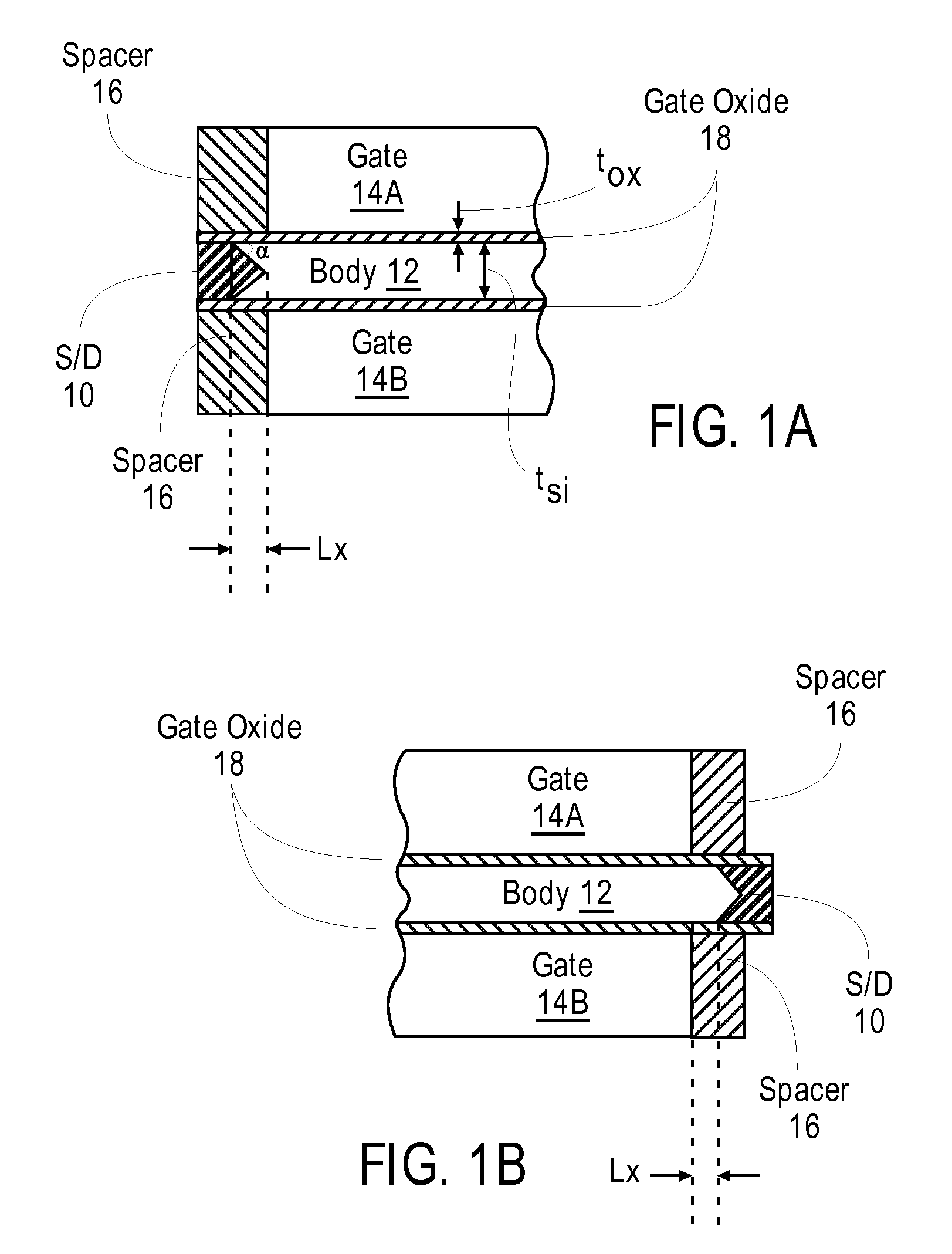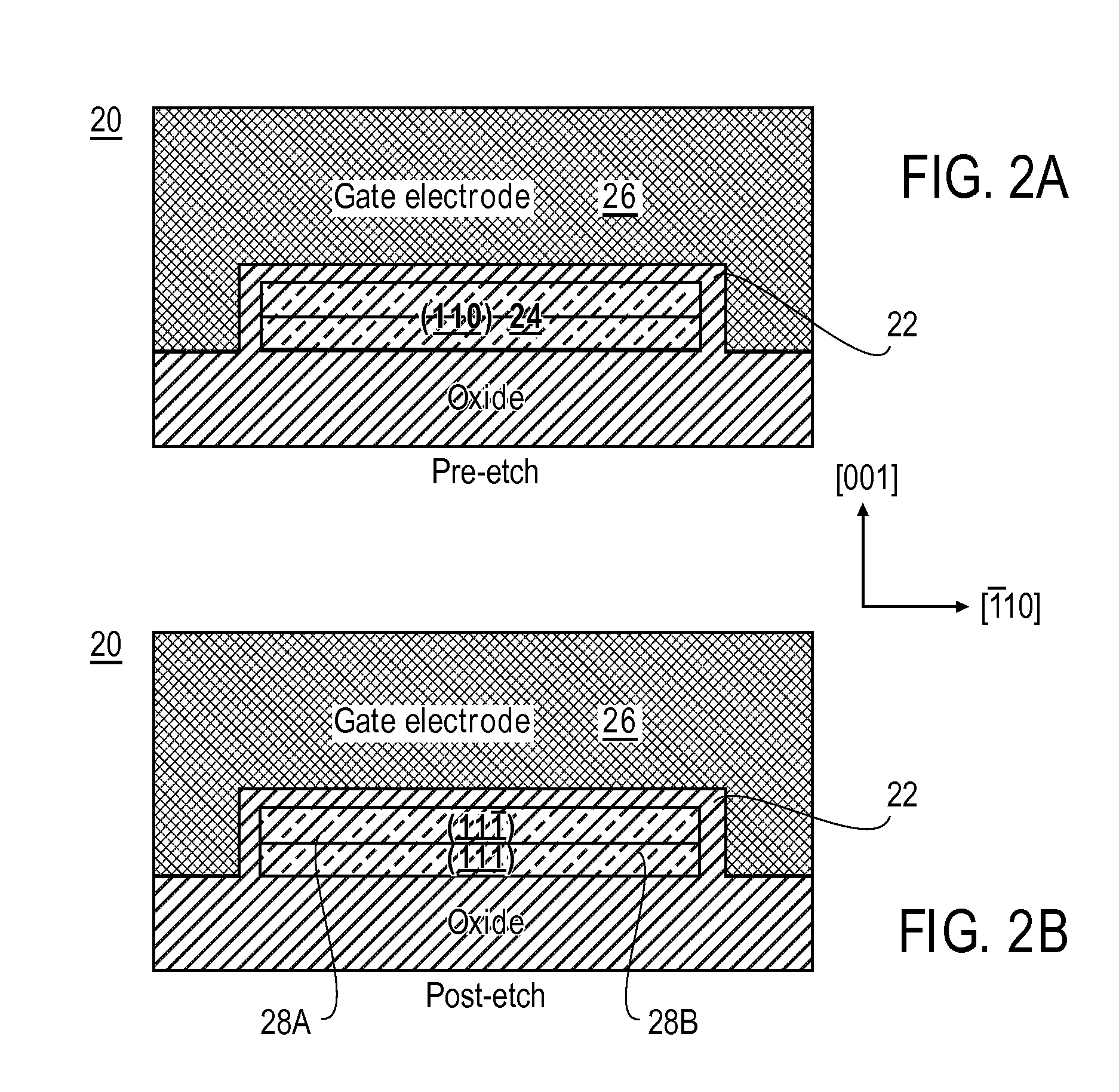Field effect transistor source or drain with a multi-facet surface
a field effect transistor and surface technology, applied in the field of field effect transistors, can solve the problems of unfavorable scaled devices, unfavorable approach, and affecting the drive current, so as to improve the control of electrostatics, precise control of surface chemistry, and enhance current flow
- Summary
- Abstract
- Description
- Claims
- Application Information
AI Technical Summary
Benefits of technology
Problems solved by technology
Method used
Image
Examples
Embodiment Construction
[0034]Described herein are devices in which the interface between a semiconductor channel and a source / drain (S / D) in the vicinity of the inversion layer is characterized by being made of more than one facet of a family of equivalent lattice planes. The S / D material can be made of a semiconducting material or of a metal. In both cases, the interface can have a thin passivation layer. Although such devices will be discussed with reference to certain illustrated examples thereof, the present invention is not intended to be limited through presentation of these examples. Instead, the invention is defined in the claims following this description and the examples presented herein are intended only to help illustrate features of the invention in a non-limiting fashion. We start by describing a FET where the S / D material is a metal.
[0035]Metal S / D FETs in which a surface of a semiconductor channel proximate to the metal S / D is formed of two or more of a family of equivalent lattice planes ...
PUM
 Login to View More
Login to View More Abstract
Description
Claims
Application Information
 Login to View More
Login to View More - R&D
- Intellectual Property
- Life Sciences
- Materials
- Tech Scout
- Unparalleled Data Quality
- Higher Quality Content
- 60% Fewer Hallucinations
Browse by: Latest US Patents, China's latest patents, Technical Efficacy Thesaurus, Application Domain, Technology Topic, Popular Technical Reports.
© 2025 PatSnap. All rights reserved.Legal|Privacy policy|Modern Slavery Act Transparency Statement|Sitemap|About US| Contact US: help@patsnap.com



